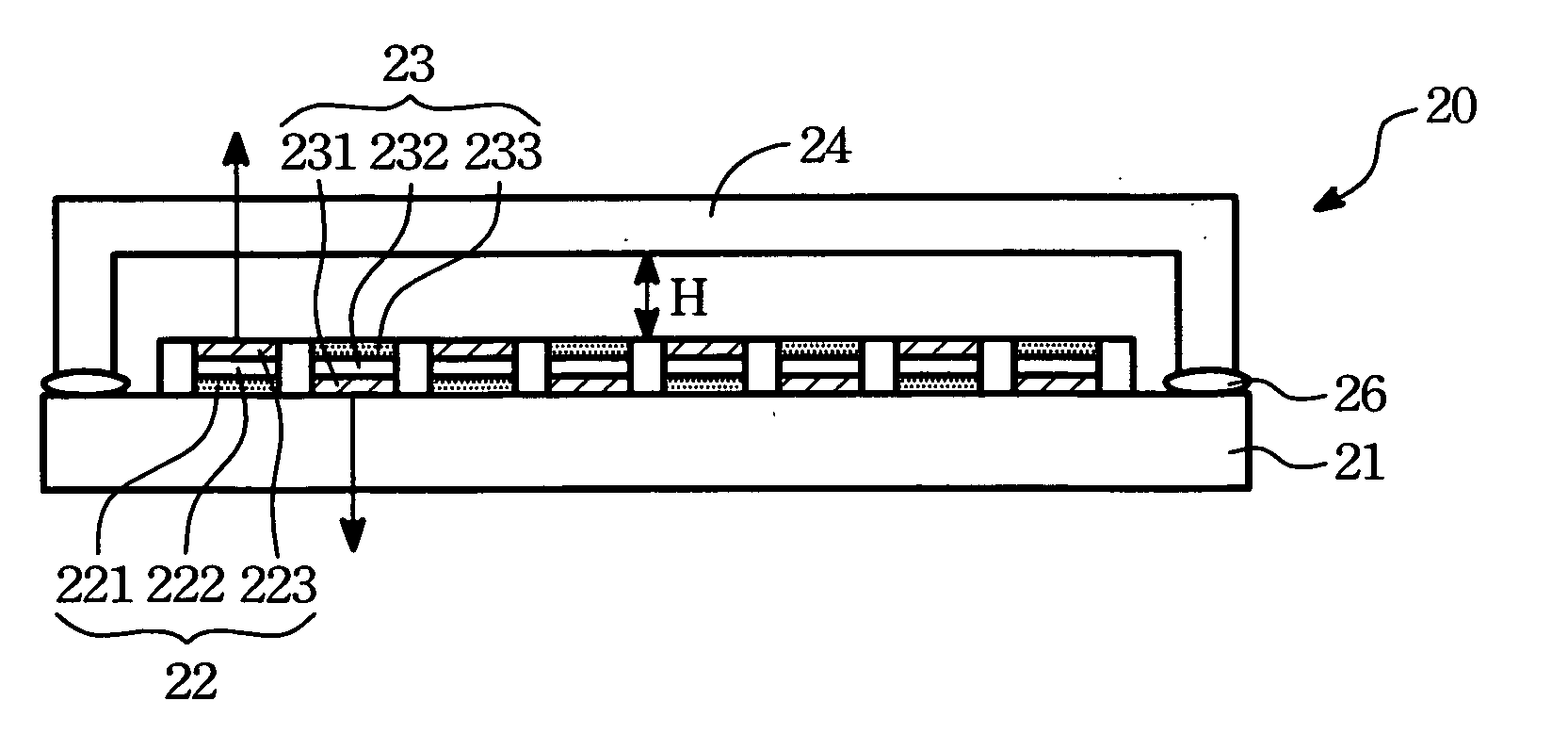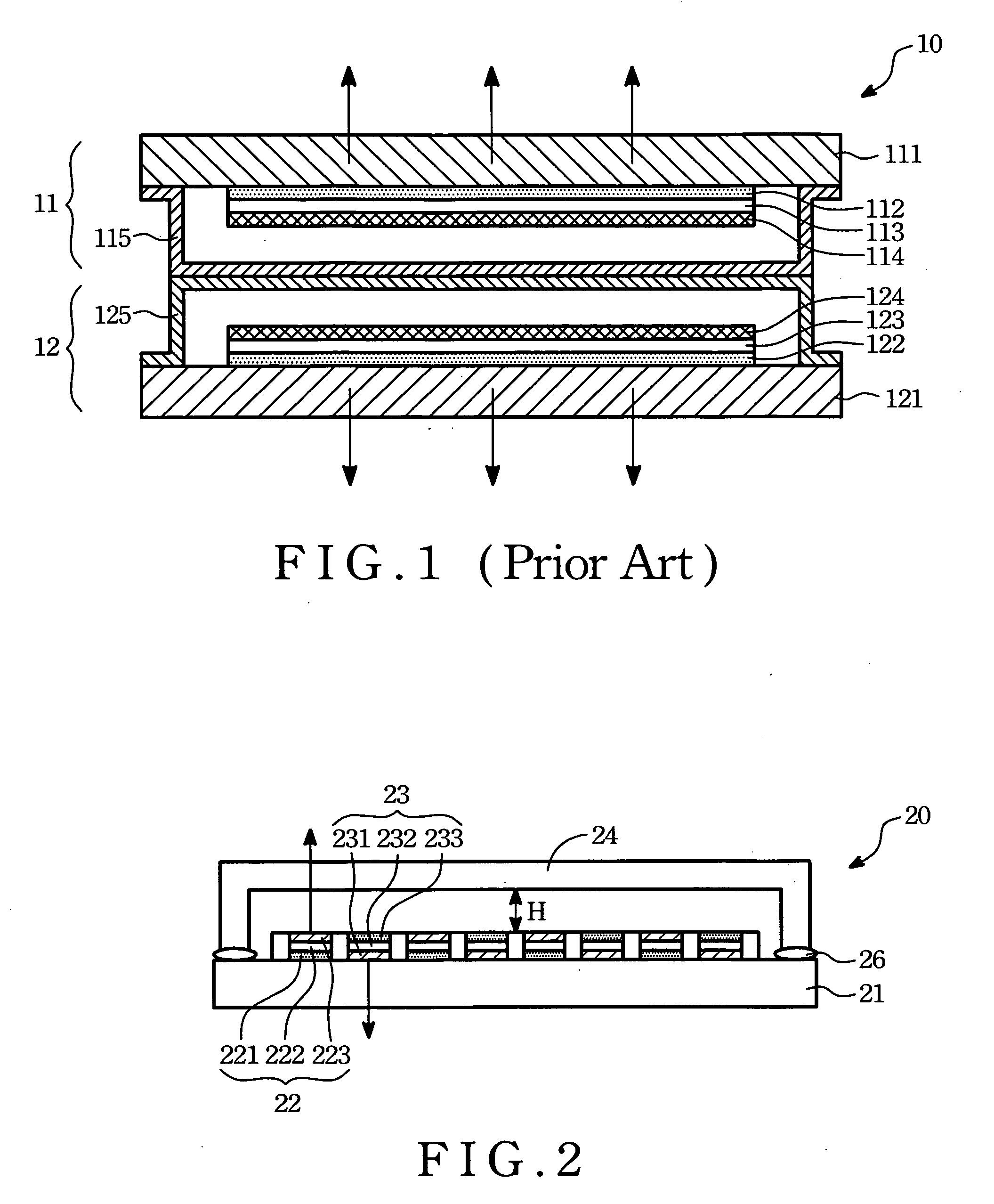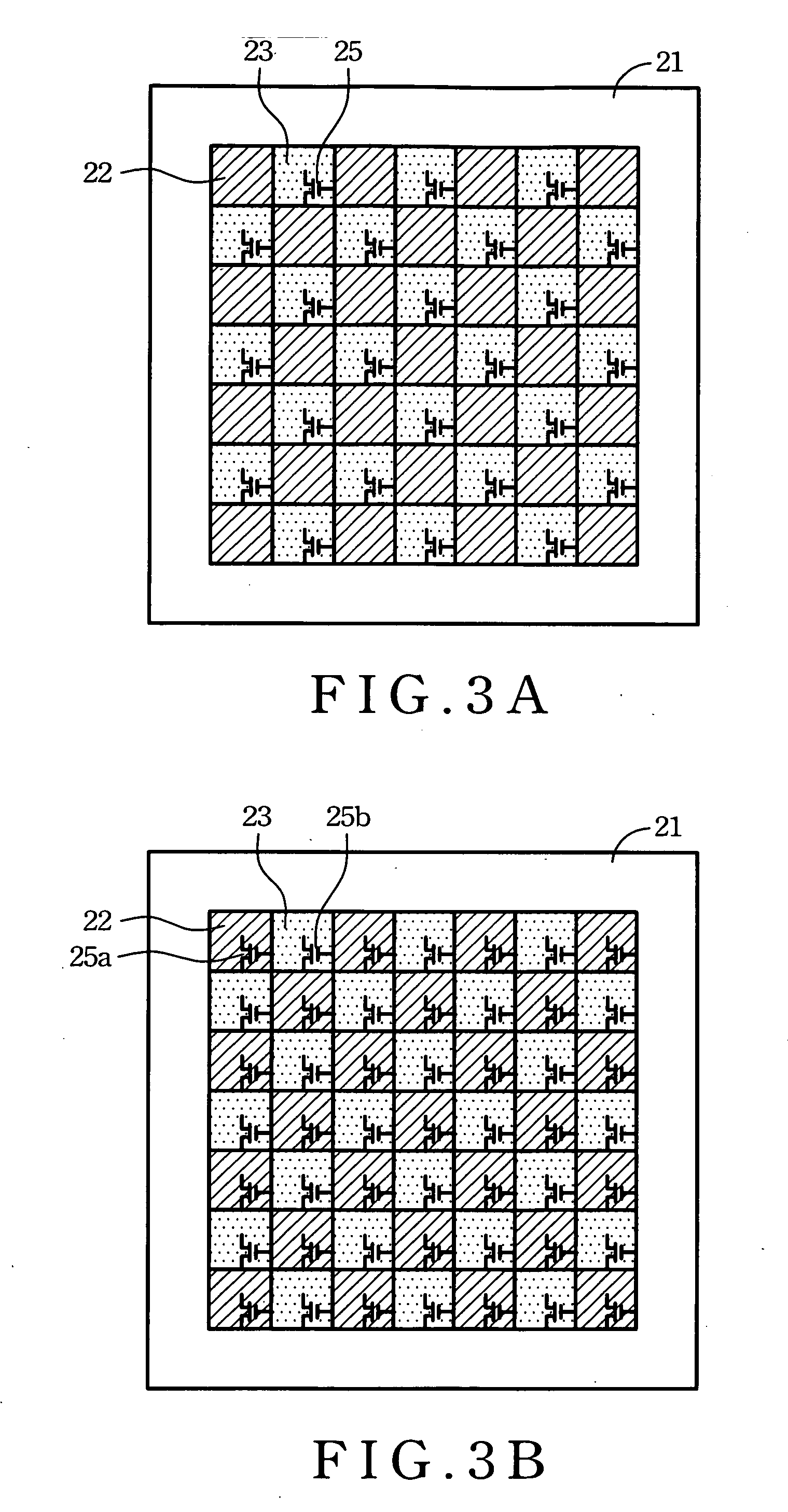Dual emission display
a dual-emission display and display technology, applied in the direction of discharge tube luminescnet screens, discharge tube/lamp details, electric discharge lamps, etc., can solve the problems of easy damage to elements mounted on the substrate, complicated and time-consuming manufacturing of conventional dual-emission displays b>10/b>, and achieve the effect of preventing particles and simplifying the manufacturing process
- Summary
- Abstract
- Description
- Claims
- Application Information
AI Technical Summary
Benefits of technology
Problems solved by technology
Method used
Image
Examples
first embodiment
[0021] FIG.2 is the present invention. A dual emission display 20 includes a substrate 21, two sort of light emitters 22 and 23 having different light-emitting directions, and a cap 24. In following description, the substrate 21 and the cap 24 can be made of organic or inorganic materials.
[0022] As shown, the light emitters 22 and 23 are next to each other, and disposed on the same substrate 21. The substrate 21 can be made of glass or plastic. In this embodiment, the dual emission display 20 is capable of displaying images in upper and lower sides since the light emitter 22 emits upward and the light emitter 23 emits downward. The cap 24 is disposed on the light emitters 22 and 23 to prevent external forces from damaging. And also, the cap 24 should be made of the hard materials with light transmissivity of equal to or more than 30 percent, such as glass, hard plastic etc. An adhesive 26 is used to adhere the cap 24 to the substrate 21. A point worth emphasizing is that, there is a...
second embodiment
[0031] FIG.4 is the present invention. A supporting layer is formed in the non-upward emitting area of the dual emission display, in order to isolate the substrate from the glass cap. Thus, the supporting layer prevents the cap from damaging the elements mounted on the substrate. In the dual emission display 30, a spacing layer 31 is sandwiched between the upward emitter 22 and the downward emitter 23. A supporting layer 32 is formed on the spacing layer 31 to prevent the cap 24 from caving downward due to external forces. In order to maintain the efficient distance, the supporting layer 32 should have at least 1 to 100 μm height. However, the materials of the supporting layer 32 are not limited to organic or inorganic materials.
[0032] As above mentioned, the cap 24 has a body with concave-up inner surface. The adhesive 26 is provided to package the substrate 21 to the low edge of the sidewall of the cap 24. In addition, the cap 24 may be replaced with a flat board, shown in FIG.5. ...
PUM
 Login to View More
Login to View More Abstract
Description
Claims
Application Information
 Login to View More
Login to View More - R&D
- Intellectual Property
- Life Sciences
- Materials
- Tech Scout
- Unparalleled Data Quality
- Higher Quality Content
- 60% Fewer Hallucinations
Browse by: Latest US Patents, China's latest patents, Technical Efficacy Thesaurus, Application Domain, Technology Topic, Popular Technical Reports.
© 2025 PatSnap. All rights reserved.Legal|Privacy policy|Modern Slavery Act Transparency Statement|Sitemap|About US| Contact US: help@patsnap.com



